Yuanlue Zhu
Gated SwitchGAN for multi-domain facial image translation
Nov 28, 2021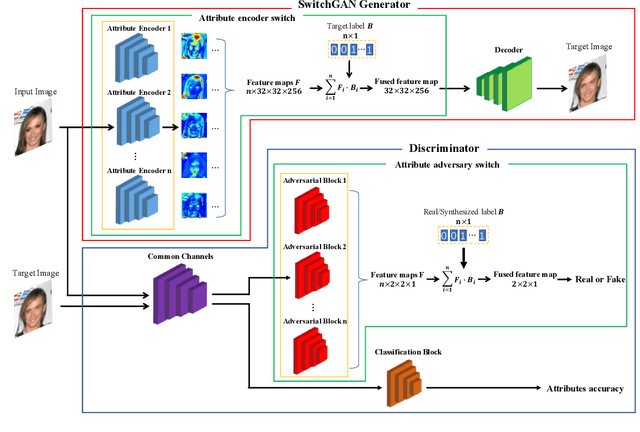
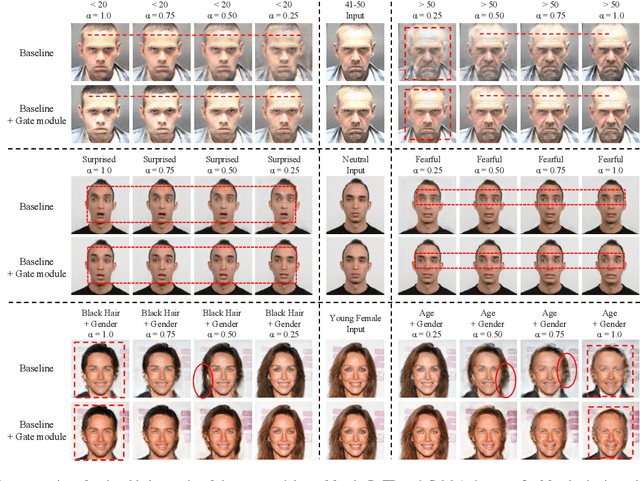

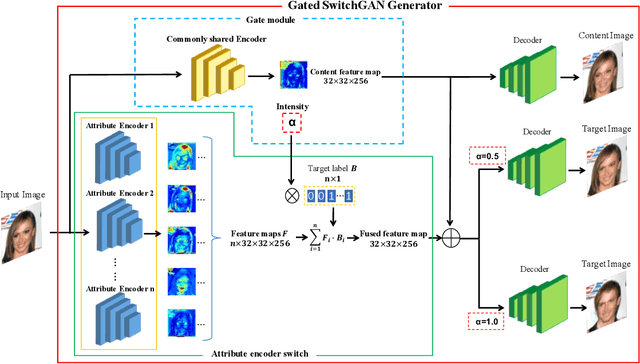
Abstract:Recent studies on multi-domain facial image translation have achieved impressive results. The existing methods generally provide a discriminator with an auxiliary classifier to impose domain translation. However, these methods neglect important information regarding domain distribution matching. To solve this problem, we propose a switch generative adversarial network (SwitchGAN) with a more adaptive discriminator structure and a matched generator to perform delicate image translation among multiple domains. A feature-switching operation is proposed to achieve feature selection and fusion in our conditional modules. We demonstrate the effectiveness of our model. Furthermore, we also introduce a new capability of our generator that represents attribute intensity control and extracts content information without tailored training. Experiments on the Morph, RaFD and CelebA databases visually and quantitatively show that our extended SwitchGAN (i.e., Gated SwitchGAN) can achieve better translation results than StarGAN, AttGAN and STGAN. The attribute classification accuracy achieved using the trained ResNet-18 model and the FID score obtained using the ImageNet pretrained Inception-v3 model also quantitatively demonstrate the superior performance of our models.
AniGAN: Style-Guided Generative Adversarial Networks for Unsupervised Anime Face Generation
Feb 24, 2021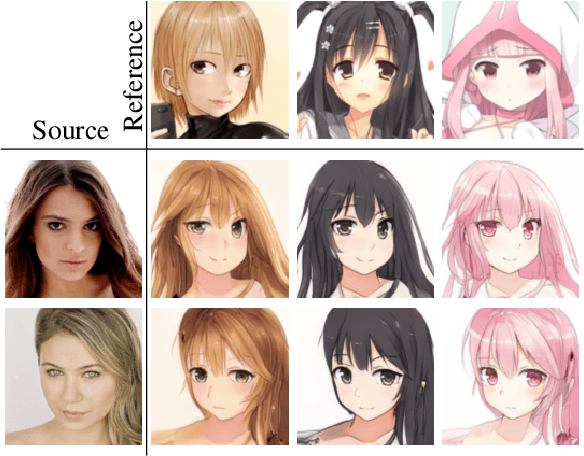
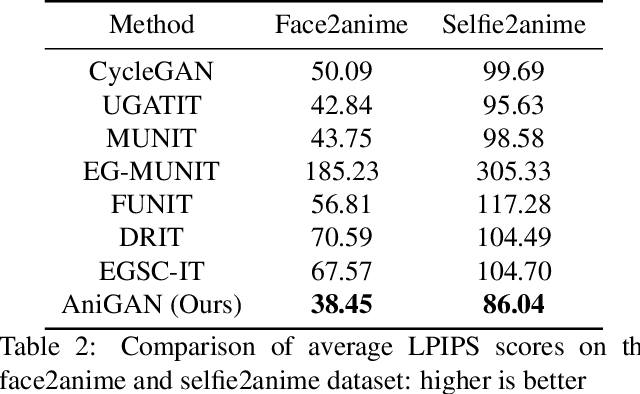

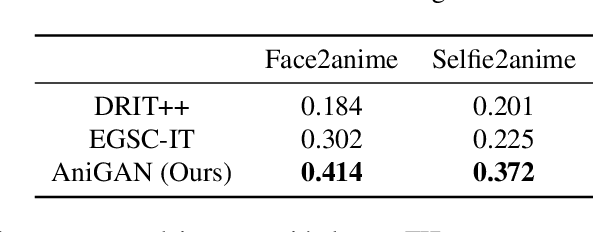
Abstract:In this paper, we propose a novel framework to translate a portrait photo-face into an anime appearance. Our aim is to synthesize anime-faces which are style-consistent with a given reference anime-face. However, unlike typical translation tasks, such anime-face translation is challenging due to complex variations of appearances among anime-faces. Existing methods often fail to transfer the styles of reference anime-faces, or introduce noticeable artifacts/distortions in the local shapes of their generated faces. We propose Ani- GAN, a novel GAN-based translator that synthesizes highquality anime-faces. Specifically, a new generator architecture is proposed to simultaneously transfer color/texture styles and transform local facial shapes into anime-like counterparts based on the style of a reference anime-face, while preserving the global structure of the source photoface. We propose a double-branch discriminator to learn both domain-specific distributions and domain-shared distributions, helping generate visually pleasing anime-faces and effectively mitigate artifacts. Extensive experiments qualitatively and quantitatively demonstrate the superiority of our method over state-of-the-art methods.
 Add to Chrome
Add to Chrome Add to Firefox
Add to Firefox Add to Edge
Add to Edge